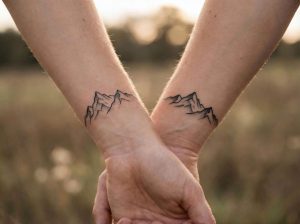Tattoos have long been more than mere adornments. They have for ages been concentrated stories, rites, and the symbols of their peoples’ identities. To-day, however, tattooing has become a most wonderful agent of self-transformation—outward reflection of inward change.
The body is a canvas upon which come together healing, strength and self-expression. What was once perhaps sneered upon as a sign of rebellion speaks now a language of regeneration and personal transformation.
The Psychology of Tattoo Transformation
From Cultural Taboos to Personal Art
Now, I must confess that I have never had a spot of ink made on myself, not because of any particular objection, you understand, but because of a mixture of cowardice and the terrible fear of commitment. Suppose that I should choose a phrase in Sanskrit which means “I love a mild cheese,” when the great spiritual significance I was to convey from it was something else? But I digress.
The ancient history of tattooing reveals how permanent marks have evolved from tribal identifiers to deeply personal statements. Throughout history, different tattoo styles that tell stories have emerged, each carrying unique cultural weight.
The Evolution of Tattoo Culture
The cultural evolution of tattooing represents one of humanity’s most fascinating journeys. What began as sacred ritual has transformed into mainstream artistry, yet the core purpose remains: to mark the body with meaning that transcends mere decoration.
Why We Choose Permanent Ink
Why do we choose to permanently alter our bodies when the rest of the world is temporary, changeable, deletable?
Some tattoos celebrate achievements — finishing a marathon, beating cancer, celebrating sobriety. Other memorial tattoos commemorate loss, keep loved ones close. Tattoos can change scars into declarations, convert vulnerabilities into visibility. They’re therapy, rebellion, declaration, and all three at once—a ritual of becoming.
The fact that tattoos last forever is part of the reason people enjoy them. At a time when social media posts are fleeting and everyone’s online profiles are constantly being updated, a tattoo is defiantly, magnificently analog. It says: “This is who I am, and I’m willing to live with that.” There is something beautiful about that kind of commitment. Psychological research on tattoos confirms this connection between ink and identity formation.
Pain as a Pathway to Transformation
We can’t ignore the pain, can we? Pain is the centerpiece of the experience, not as punishment, but as pain as pathway to something greater. By suffering through it, tattooing transforms into ritual. The release of endorphins, the rhythmic motion of the needle, the focus on breathing — many describe the experience as meditative, even transcendent.
Pain creates significance. A tattoo earned through hardship holds greater significance than one acquired strictly for aesthetics. It’s a reflection of ancient rituals that tested physical and spiritual strength and belonged to the initiated. Understanding tattoo placement psychology reveals how much thought goes into each decision.
The Cultural Shift: From Rebellion to Biography
Just a few generations ago, having tattoos visible was a barrier to employment. Now, tattoos are present in boardrooms, classrooms, and even in Parliament. Grandparents who were repelled by tattoos now discuss designs with their grandchildren. Society has come to interpret tattoos as biography, not rebellion—as emotional healing made visible.
This evolution reflects an increasingly individualistic society. As identity continues to evolve toward becoming more fluid and self-determined, tattooing provides a universal language of authenticity. Symbols of transformation like butterflies and phoenixes have become popular precisely because they speak to this journey. Your tattoos convey where you’ve been, what you believe, and what you’ve endured—tattoos as personal narrative.
Final Thoughts: Ink as Journey, Not Destination
Tattoos, at the root, are a representation of embodied metamorphosis—a ritual of becoming, a telling of identity and experience in images. Each design tells a story; not of perfection (god forbid) but of persistence, of survival, of man’s eternal urge to make order out of chaos.
The process is one which unites the artist with her subject, pain and purpose, body and mind, in a way which remains inexcusably miraculous in spite of our best scientific efforts to unravel it. The career as a tattoo artist represents its own transformation journey—from apprentice to master.
And when the line is finally drawn, when the needle ceases its vibration and you are left tender-skinned and slightly dazed, the thing that remains is not simply ink. It is evidence of evolution. It is proof that you were here, that you felt highly enough to make a permanent mark—an act of self-authorship.
It is a slight rebellion against mortality, an example of your insistence that your story matters, that you matter. A living testimony to transformation itself.
And, is not that the general drift of being human after all?




